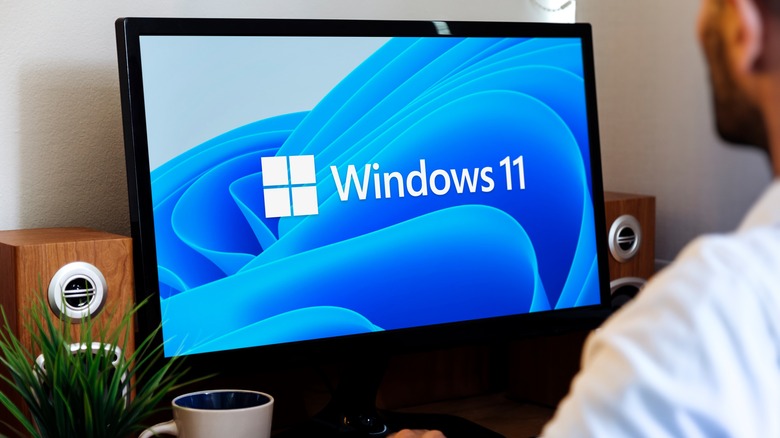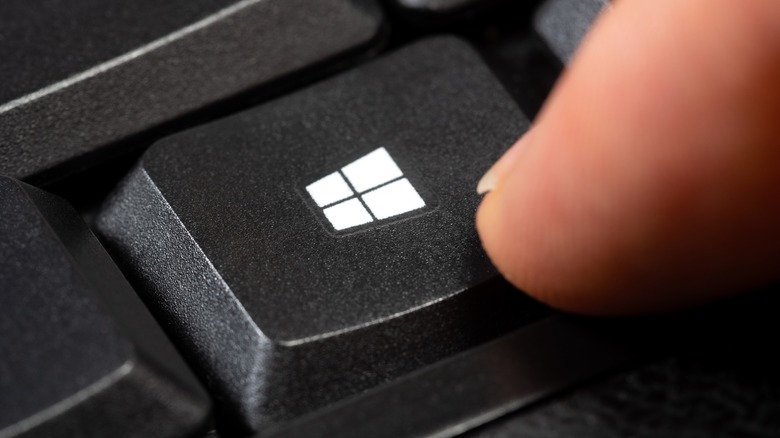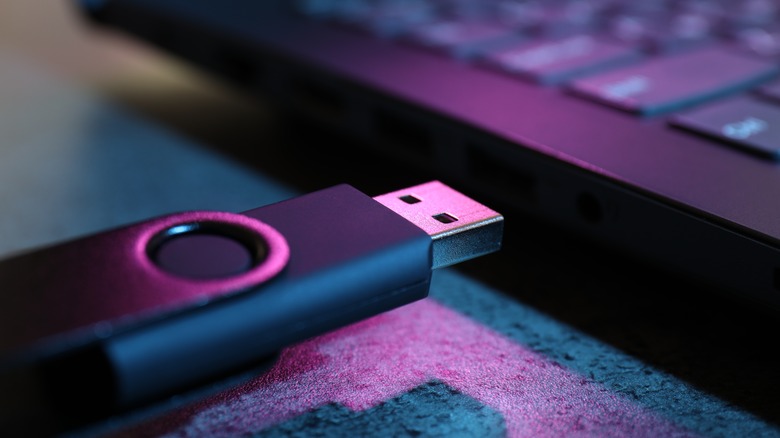How To Install Windows 11 Without An Internet Connection
Windows 10 holdouts, unfortunately, are going to have to upgrade to the newest version of the operating system soon. That's because the end is nigh for Windows 10, and Microsoft doesn't want anyone to forget it. After October, it will no longer receive updates, including critical security fixes. But one issue that many have had, separating the new version of the operating system from the old, is that Windows 11 needs the internet, including during installation.
That makes things a bit tricky if you want to install on a secondary machine, or if you want to install on a device that won't be connecting to a network. Luckily, there is a workaround that involves opening the Command Prompt during the OOBE (Out of Box Experience) setup process. You can also use the Command Prompt within Windows to do administrative tasks like enabling a hidden ultimate performance power plan. During setup works the same way.
Usually, if the installation application detects that there's no internet connection, you'll receive a warning. "Oops, you've lost internet connection," it prompts. "Let's go back and connect to your network again." Of course, if you're not connected to a network or the internet in the first place, you're just going to be stuck in a loop at that point. Even clicking Retry on the warning page will start the process over. You'll need to make use of the command prompt to disable that internet check so you can install Windows 11 offline.
How to install Windows 11 while offline easily
To continue the install offline, on the same "Oops" page, press the Shift + F10 keys on your keyboard. When the Command Prompt appears, type the following and press Enter:
OOBEBYPASSNROThe computer will restart. Don't be alarmed, that's good. When it reboots, you'll see the OOBE setup again. You'll need to adjust your region and keyboard settings again, so Windows knows where you are and what language to follow. This time you're going to do things a little differently on the connection page. When the option to connect to a local network appears, choose the I don't have internet button on the bottom right. Windows will prompt you one more time to connect, but just select Continue with limited setup, also in the bottom right. After that, simply follow the instructions as you normally would and Windows 11 should install fine.
Another way to install Windows 11 while offline, if the previous method doesn't work, is to use the Registry Editor. Going all the way back to the beginning:
- Use Shift + F10 to open the Command Prompt during install.
- Type "regedit"
- Press Enter.
- When the Registry Editor opens navigate to the following path: HKEY_LOCAL_MACHINE > System > Setup.
- Create a new key and name it LabConfig.
- Right click on the new key and select New > DWORD (32 bit) Value.
- Name the DWORD "bypassnro" and select the data value and set it to 1.
- Once you've done that, close the Registry Editor and continue setup.
It should now work without requiring an internet connection. Do note, these methods will not help you bypass system restrictions to install Windows 11 on computers that aren't supported – the TPM 2.0 requirement still stands.
What else to know about installing Windows 11 offline
If you're planning to install Windows 11 offline on a new machine, you may also want to prepare a USB drive with essential drivers. If you're doing a clean install, you'll likely need motherboard and Wi-Fi card drivers available for when you eventually do want to connect to the internet. Some other drivers you might want to include are new graphics card drivers, and sound card drivers, which may be part of your motherboard driver package.
The easiest way to do this is to place the drivers in a folder on the root of the drive. Drivers should be extracted and not in compressed folders. Windows setup is primarily looking for an .inf file. During the OOBE setup process, you'll reach a point that asks, "Where do you want to install Windows?" You should see a "Load driver" option. Click that then Browse. Navigate to the folder that contains the driver you want to install and click OK. You should now see the driver packages you selected in the list. Click Install to continue with the Windows installation process.


